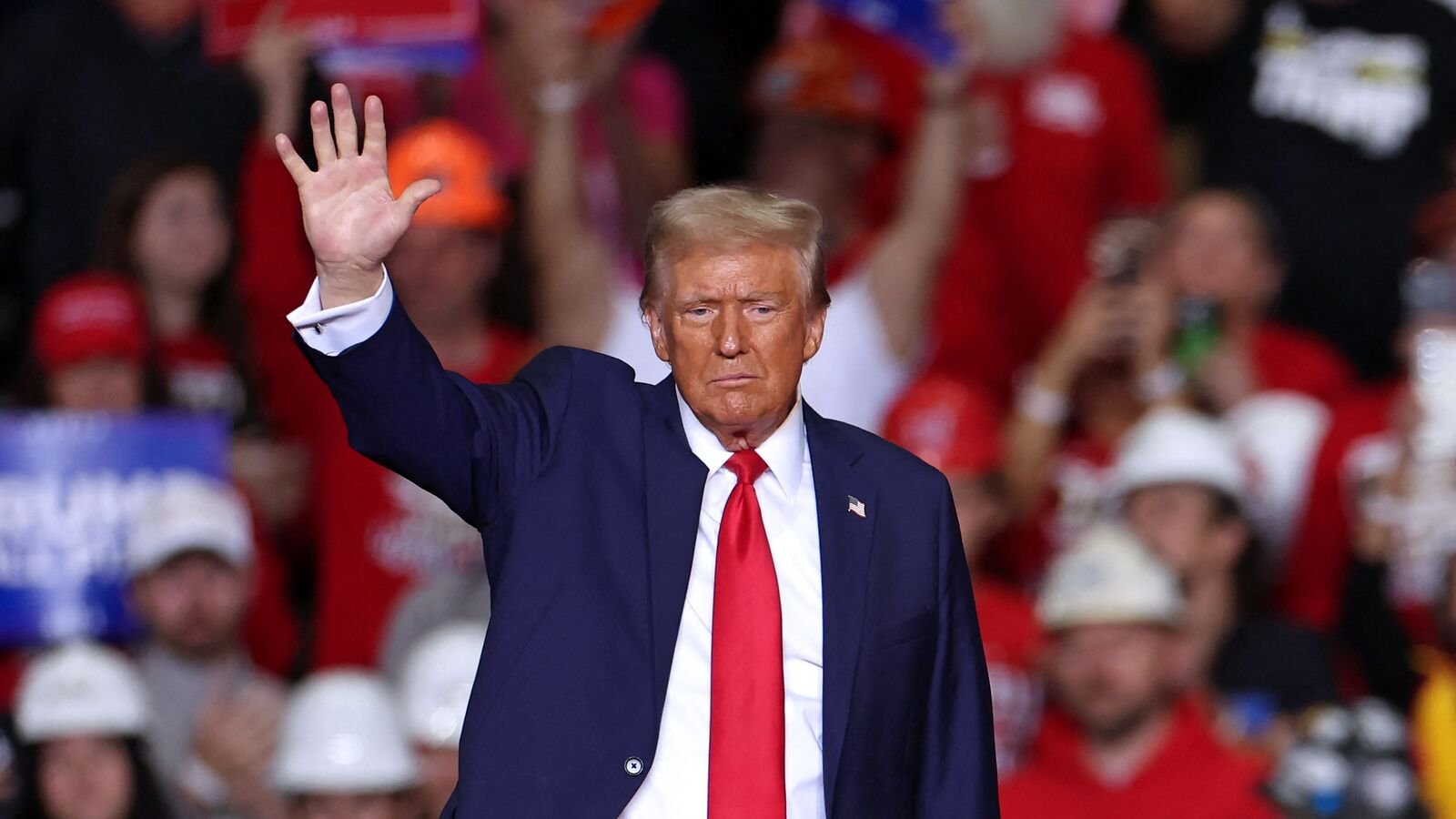A second term for Donald Trump could negatively impact India’s economy, primarily due to trade wars and protectionist policies. Trump’s proposed tariffs could lead to rupee volatility, higher inflation, and slower growth in India. While a trade war with China might offer some opportunity for India, high tariffs make it difficult to build competitive supply chains. Additionally, India’s own protectionist policies under Modi have increased tariffs, contributing to inflation. To avoid these challenges, India should focus on trade liberalization, which has historically benefited its economy and can create jobs, open markets, and support growth for small businesses.

The Impact of a Donald Trump Presidency on India’s Economy
Indian Americans are reportedly voting for Kamala Harris over Donald Trump by a 2:1 margin, but there remains a faction of Indians who admire Trump’s approach, particularly his appeal to White supremacy. This admiration, while concerning, is tied to the similar majoritarian mindset that some feel resonates with the political climate in India.
However, a second term for Donald Trump could bring negative consequences for India’s economy, primarily due to trade tensions and protectionist policies. Here’s why a Trump presidency could be bad news for New Delhi.
The Trade War Threat
One of Trump’s most significant economic promises is initiating a trade war. While he may target China more aggressively, India isn’t exempt from his tariffs. On September 17, he called India a “very big abuser” of trade, and with his plan to introduce global import tariffs between 10-20%, India could see significant consequences. This could lead to:
- Rupee Volatility: Increased tariffs can cause instability in the currency market, leading to a weaker rupee.
- Tighter Monetary Policy: India might need to raise interest rates to counter inflation, leading to slower economic growth.
In contrast, Kamala Harris’ policies focus on resolving issues like India’s trade relationship with Russia in the context of the Ukraine war but don’t involve the drastic tariffs Trump promises.
The China+1 Strategy: Opportunity or Challenge?
While a trade war with China could theoretically benefit India by encouraging companies to diversify their supply chains, the practicality of this is uncertain. Trump’s plan to impose a 60% tariff on Chinese imports could push companies to adopt a “China+1” strategy, where they look to other markets like India. However, high tariffs on imported goods would make it harder to build competitive supply chains.
In addition, India has adopted its own protectionist measures under Prime Minister Narendra Modi, making it difficult for foreign companies to operate smoothly.
Cracks in US-India Relations
The facade of strong US-India relations hides several unresolved issues. There is bipartisan support in the US for a strong partnership with India, mainly due to the growing influence of Indian-American communities and shared concerns over China. The formation of the Quad — an alliance between the US, India, Japan, and Australia — is one example of cooperation.
However, India’s relationship with Russia has strained these ties. India continues to maintain its trade links with Russia, largely driven by the availability of cheap Russian oil. The US has also expressed concerns over alleged covert Indian activities within its borders, adding to the tension.

Trump’s Trade Record: A Cause for Concern
Looking at Trump’s previous actions, there is plenty of reason to worry about his potential second term:
- H-1B Visa Restrictions: Trump’s “Buy American, Hire American” policy in 2017 made it harder for foreign workers, especially Indians, to acquire work visas.
- Tariffs on Indian Goods: In 2018, Trump imposed tariffs on Indian aluminum and steel, leading to retaliatory measures from India.
- Removal of GSP Benefits: In 2019, the US removed India from the Generalized System of Preferences, resulting in increased tariffs on a wide range of Indian exports.
These measures led to a strained trade relationship between the two countries, and things only improved after Joe Biden took office. Under Biden, trade disputes were resolved, and visa processes for Indian workers were streamlined. However, the US trade deficit with India reached a record high in 2023, signaling potential future conflict.
India’s Growing Vulnerability to US Tariffs
India is now more vulnerable than ever to US tariffs. The US is India’s largest export destination, accounting for 18% of Indian exports in 2023-24, up from 12% a decade ago. India also enjoys a trade surplus with the US, exporting more than it imports. But the US only views India as its ninth-largest trading partner, meaning that trade with India is less critical for Washington.
If Trump imposes tariffs on Indian goods, India would likely retaliate, creating a situation where both economies suffer. The ripple effect could lead to higher inflation in both countries, making everyday goods more expensive for consumers.
Modi’s Protectionist Policies
While Trump’s policies are concerning, it’s important to note that India’s own policies under Prime Minister Modi have also become more protectionist in recent years. Since 2015, India has implemented over 3,200 tariff hikes. The average tariff rate increased from 13% to 18% in just one year (2018). Despite these efforts to reduce Chinese imports, Indian trade with China continues to grow, with imports from China hitting a record $101.7 billion in 2023-24.
Meanwhile, large monopolies closely linked to Modi’s government have benefited from protectionist measures, contributing to rising inflation. These powerful firms lobby for higher tariffs, which ultimately hurt Indian consumers by raising the cost of imported goods.

The Path Forward for India
If Trump is re-elected, India faces several challenges, including the risk of a trade war and the economic consequences of higher tariffs. The chances of higher inflation and slower economic growth under a Trump presidency are much greater.
India’s best option in the long term is to focus on trade liberalization, as it has been one of the biggest beneficiaries of global trade agreements. Between 2004 and 2014, India’s share of global exports rose by 77%. However, in the years leading up to 2023, that growth slowed to just 28%.
To avoid the negative effects of protectionism, India should embrace a more liberal trade policy, which would create more jobs, open new markets, and generate more revenue for Indian businesses — including Micro, Small, and Medium Enterprises (MSMEs).
In conclusion, while a Trump presidency may offer temporary benefits, such as encouraging companies to shift their focus to India from China, the overall economic consequences could be severe. India’s leaders should take a more liberal approach to trade to ensure sustained growth and prosperity in the future.
Stay tuned to Club4Celebs for more updates.


